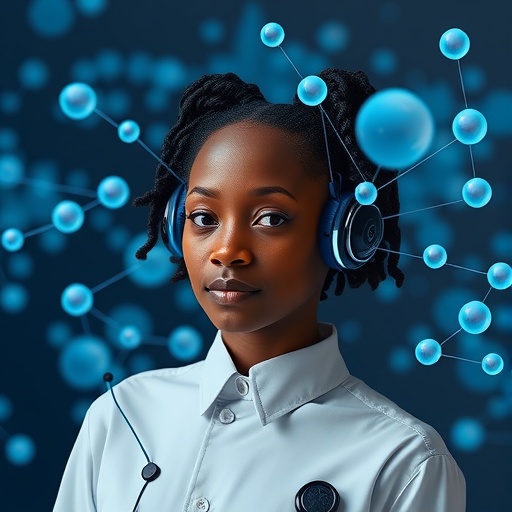In recent years, the educational landscape has been dramatically transformed by the advent of innovative technologies. Among these advancements, Generative Artificial Intelligence (GAI) has emerged as a potent force that holds the potential to revolutionize the way educators and students interact with knowledge. As this technology continues to evolve, it prompts a variety of reflections on its integration into higher education, especially in regions like Kenya. Recent research conducted by Wainaina and Sun sheds light on the perceptions and readiness of educators within Kenyan higher education institutions to embrace GAI in their teaching and research practices.
The study uncovers a dual dimension of experience among educators regarding GAI. On one hand, there exists a wave of enthusiasm that stems from recognizing the potential benefits GAI could bring to educational practices. Many educators are excited about the prospect of utilizing AI-generated content to enhance learning experiences, streamline administrative tasks, and facilitate a more personalized approach to education. The ability of GAI to develop tailored materials that cater to individual learning needs is seen as a significant advantage, as it could lead to improved academic outcomes for students.
On the other hand, the research reveals a palpable sense of apprehension among some educators. Concerns surrounding ethical implications, data privacy, and the potential for diminishing the human touch in education are prevalent. For many, integrating GAI into teaching practices raises questions about authenticity and the role of the educator. The fear that GAI might replace human input or creativity is a daunting prospect for those who have dedicated their careers to fostering interpersonal relationships with their students.
Wainaina and Sun’s findings also highlight the disparity in the comfort level of educators when it comes to adopting such advanced technologies. While some educators display a high readiness to experiment with GAI, others remain skeptical and resistant. A lack of familiarity with GAI tools and an insufficient understanding of their functionalities often leads to hesitance in embracing them. This divide underscores the pressing need for comprehensive training programs that either boost confidence or provide robust support for educators looking to innovate their teaching methods through GAI.
Furthermore, the study indicates that collaboration will play a pivotal role in the successful integration of GAI in educational settings. By establishing partnerships between technologists and educators, there exists a unique opportunity to develop, adapt, and refine GAI tools that align closely with educational goals and teaching methodologies. Educators represent a wealth of knowledge regarding pedagogical practices and understand their students’ needs; thus, their insights should be a crucial component of the development process for any AI tools.
Additionally, the educational system in Kenya presents unique challenges and opportunities that could affect the implementation of GAI technologies. The landscape is characterized by diverse learning environments, ranging from urban universities to rural colleges, each with its own set of socio-economic realities. It is critical that any effective implementation of GAI considers these factors to ensure that the technology benefits all students regardless of their background. Tailoring GAI solutions to fit diverse educational contexts will enhance their efficacy and, ultimately, their acceptance among educators.
Moreover, the research emphasizes the potential for GAI to bridge resource gaps in education. In many cases, educators lack sufficient teaching resources, leading to a detriment in the quality of education. GAI could alleviate this issue by providing instant access to a wide range of materials, including customized learning modules and assessment tools. The convenience of on-demand resources could empower educators, allowing them to focus more on instruction and student engagement rather than searching for suitable teaching materials.
However, the acceptance and application of GAI in education cannot solely rely on technical capabilities; there is also a pressing need for a cultural shift within educational institutions. Fostering an environment that encourages experimentation, innovation, and openness to new teaching paradigms is essential. Educational leaders play a crucial role in this regard, as they can influence institutional policies and promote a collective commitment towards embracing technology as a valuable ally in the educational journey.
As the future unfolds, the pressures on education systems to incorporate technology will only intensify. The arrival of GAI poses a significant opportunity for educators in Kenya to redefine the instructional framework and enhance academic performance. Nevertheless, a careful, thoughtful approach is needed to ensure that this integration respects the essential nature of teaching as a human-centered endeavor.
Finally, the insights provided by Wainaina and Sun compel stakeholders within the education sector to engage in meaningful dialogue about the best strategies for integrating GAI into teaching and research. The collaborative approach involving educators, technology developers, and policymakers can ensure that GAI is not merely an addition to the educational toolkit, but a transformative force that serves the greater good of society.
In conclusion, the willingness of educators to embrace Generative Artificial Intelligence has the potential to reshape higher education in Kenya profoundly. The synthesis of enthusiasm and trepidation revealed by the study underlines the complexities that accompany technological innovation in educational spaces. As the discourse continues, it will be imperative for institutions to provide the necessary support and resources to facilitate a successful transition into an era of AI-enhanced teaching and learning.
Subject of Research: The integration of Generative Artificial Intelligence in teaching and research within Kenyan higher education.
Article Title: Educators’ perceptions and willingness to integrate Generative Artificial Intelligence in teaching and research: evidence from Kenyan higher education.
Article References:
Wainaina, P.K., Sun, Y. Educators’ perceptions and willingness to integrate Generative Artificial Intelligence in teaching and research: evidence from Kenyan higher education.
Discov Educ 4, 347 (2025). https://doi.org/10.1007/s44217-025-00820-z
Image Credits: AI Generated
DOI: 10.1007/s44217-025-00820-z
Keywords: Generative Artificial Intelligence, education, Kenyan higher education, technology integration, educator perceptions, teaching methodologies, research.




